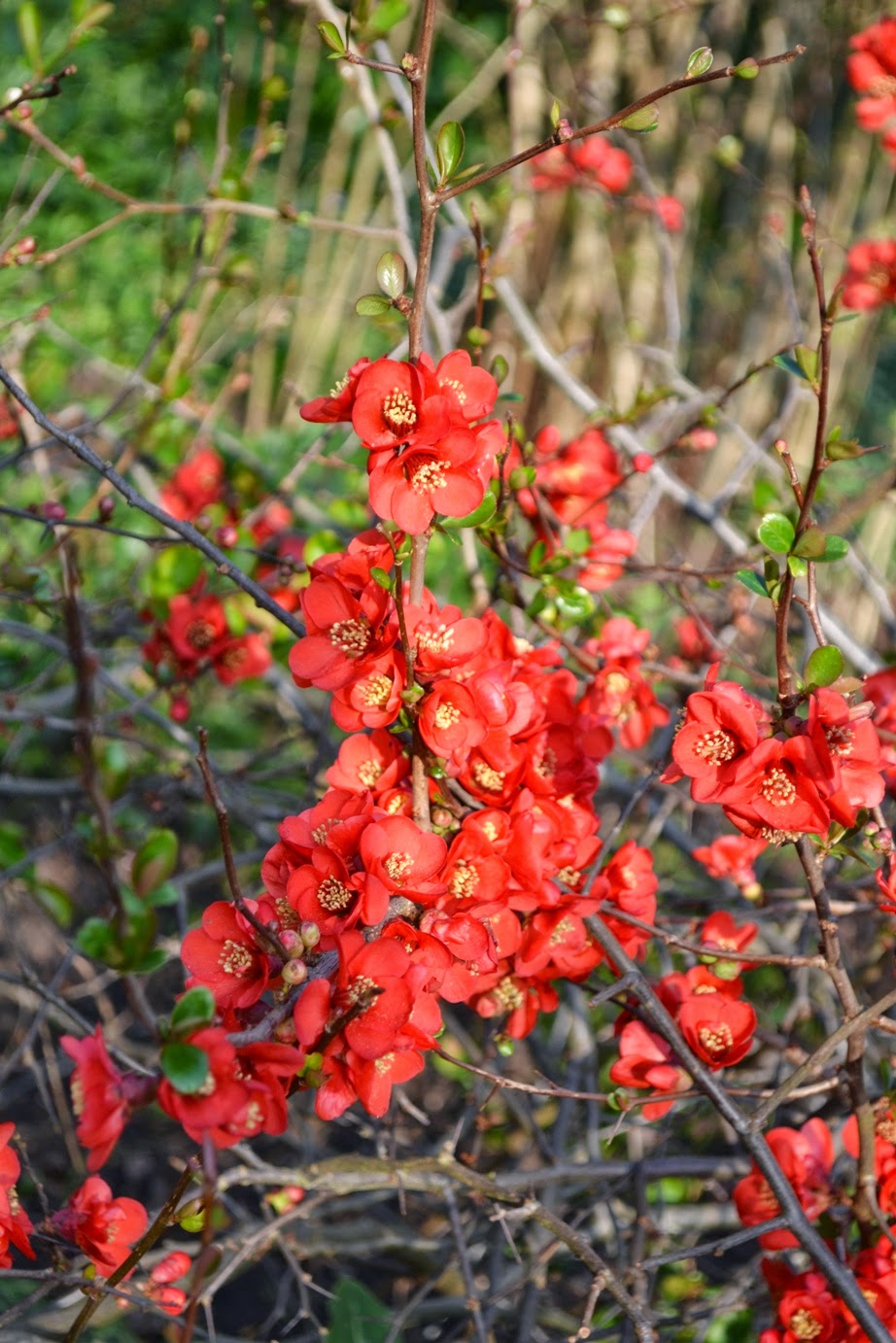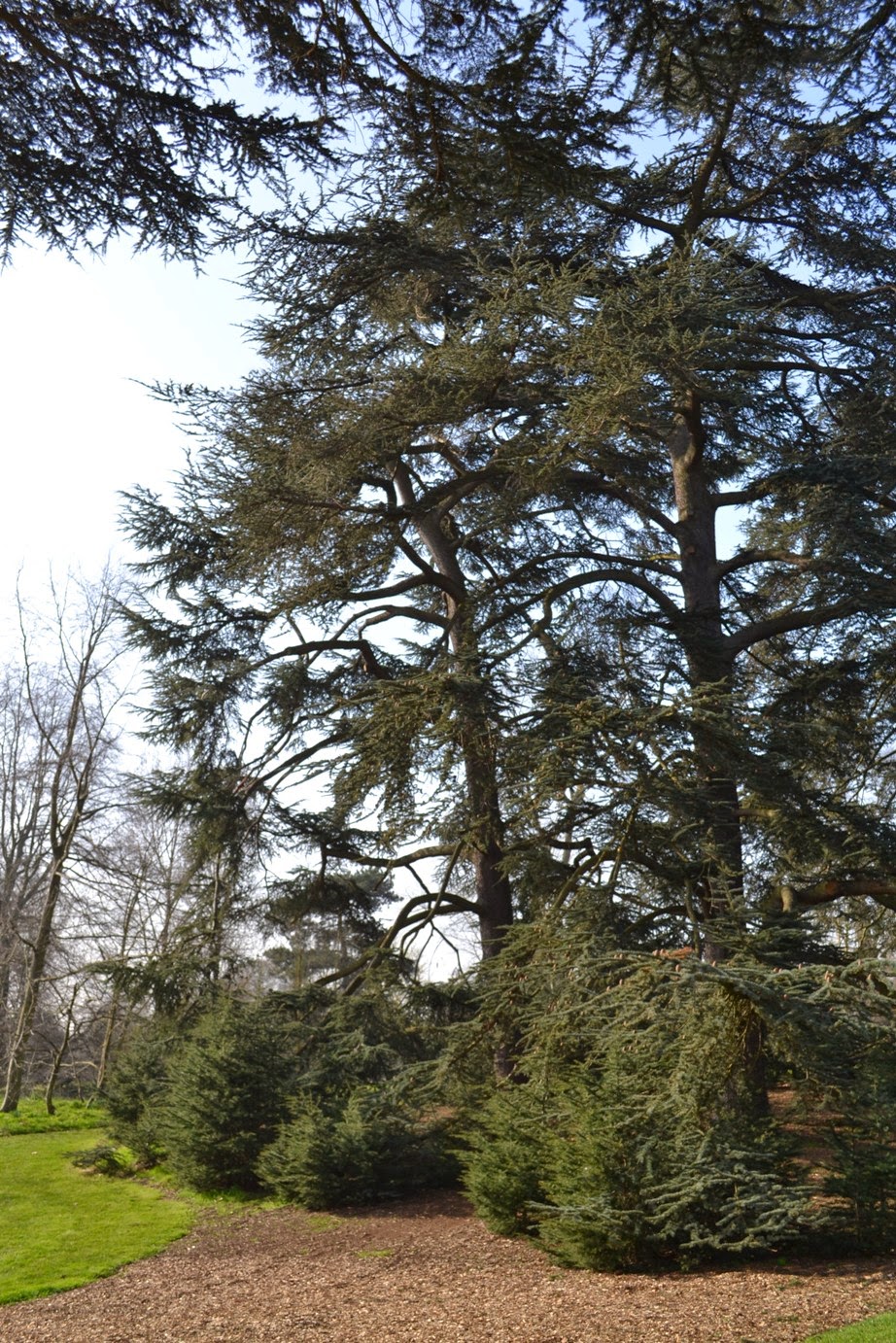14 March 2014
Map provided at
entrance; spring bulb map can be downloaded from www.kew.org.
Half day
This visit was
focussed primarily on naturalised spring bulbs, but there was also much else of
interest.
Several species of
"Glory of the snow" (formerly Chionodoxa,
but now subsumed under Scilla) are
well naturalised. They differ from other
squills by having the petals joined for a short distance into a tube, not
separated to the base. Naming and
identification is rather problematic because of differences between the Royal
Horticultural Society website and Stace's Flora, Stace subsuming Scilla siehei under S. forbesii, while RHS (and the Kew
signage) still refers to siehei. To complicate matters siehei/forbesii is often sold as S. luciliae, yet another species!
The final species is S. sardensis
which is the most distinct in not having a marked white eye in the centre of
the blue-violet petals, although we found that the base of the petals was often
pale whitish and they could appear from a distance as having a white eye! They were extensively naturalised around the Woodland Garden
Scilla
sardensis
All the other
"Chionodoxas" have a distinct white eye with the white base of the
petals coming about a third to half of the way up them. The easiest species to differentiate is S. luciliae, which has umbels with 1-3
flowers (Stace gives 1-2, RHS gives 2-3), whereas the other species normally
have many more (although occasional weaker specimens only have 3). S.
luciliae was naturalised at various places along with sardensis and forbesii/siehei,
especially in the grass bordering the path between the Orangery restaurant and
the White Peaks
Scilla
luciliae
This site has a
sign referring to siehei and the
other "Chionodoxas" here were certainly S. forbesii (according to Stace's key). The RHS website does not provide an official
description of forbesii, but it does
recognise it elsewhere as having smaller and less deeply violet flowers than siehei.
On this basis the plants we saw were forbesii
rather than siehei, but the
comparison is too vague to be useful.
Altogether confusing!
Scilla
forbesii
Squills proper can
be compared to "Chionodoxa" by going to the Cherry Walk at the east
end of the Temperate House, where Siberian squill Scilla sibirica is well naturalised, their flowers
characteristically facing downwards, which usefully distinguishes them from our
other naturalised squills.
Siberian squill
Crocuses are also
well naturalised here. We were a little
late for the early crocus Crocus
tommasinianus which is perhaps the most extensively naturalised, as it is
elsewhere, as it seems to spread readily by seed. It was very evident along Princess Walk, but
most of them were over.
Early crocus
The other crocuses
were best seen in the length of grass extending east to Victoria Gate, where
there were several varieties of the Dutch crocus C. vernus, including 'Purpureus Grandiflorus', the striped
'Pickwick' and the white 'Jeanne d'Arc'.
Crocuses 'Purpureus
Grandiflorus' and 'Pickwick'
The other bulbs of
interest were the daffodils. Our native Narcissus pseudonarcissus is naturalised
at the Woodland Garden
Narcissus
pseudonarcissus
The other possible
native, Tenby daffodil N. obvallaris,
is conspicuous at the north end of Princess Walk. It has deep yellow petals, whereas pseudonarcissus has very pale ones.
Tenby daffodils
The most
extensively planted of the earlier-flowering daffodils here is, like everywhere
else, 'February Gold', massed along Broad Walk and also in the formal planting
of the Parterre in front of the Palm House.
Near Victoria Gate we also saw 'Topolino'.
'February Gold'
'Topolino'
In the
Conservation Area in the SW corner of the gardens, and around Queen Charlotte's
Cottage, we also saw the odd specimen of 'Bridal Crown' and 'Telamonius Plenus',
both of which have proliferating petals in the centre instead of a trumpet.
'Bridal Crown'
'Telamonius Plenus'
Otherwise the
variety of daffodils in the open here was rather limited, compared, say, to Saville Gardens
at Windsor Iberian Peninsula , which may be more temperature
sensitive.
Narcissus
bulbocodium
The other exotic
plants on display here included many spectacular ones, such as the tulips Tulipa kaufmanniana, T. bakeri and T. aitchisonii; the crocus Romulea bulbocodium; and a yellow
fritillary Fritillaria carica.
Fritillaria
carica
Having had our fill of bulb-plants - the snowdrops were over, although there were some clumps of summer snowflake Leucojum aestivum - we could concentrate on other features of interest, such as the early-flowering shrubs. There is a group of many varieties of magnolia just west of Princess Walk, and these were just now perfectly in flower. They are not our favourite plant, but we had to admit this display was impressive, especially the conjunction against a blue sky of the pink M. campbellii and the white M. heptapeta. They included one magnolia M. x kewensis named after
Magnolia
campbellii &
heptapeta
Magnolia x
kewensis
Magnolia
sprengeri
Rhododendron
fastuosum
Rhododendron
pulcherrimum
Camellia
japonica
Other flowering
shrubs around the gardens included Higan cherry Prunus subhirtella, popular with Japanese tourists, and the common
garden quince Chaenomeles x superba
'Crimson & Gold'.
Higan cherry
Quince 'Crimson & Gold'
Low plants other
than bulbs were not frequent - the only natives or long-established British
plants in flower, other than lungwort, were daisy Bellis perennis, groundsel Senecio
vulgaris, hairy bittercress Cardamine
hirsuta, small nettle Urtica urens
(abundant on bark mulch under some of the trees), and red dead-nettle Lamium purpureum. Also on bark mulch in one spot was an
unseasonal group of glistening inkcap Coprinus
micaceus.
Red dead-nettle
Glistening inkcaps
Although Kew Gardens
Atlas cedars with
regenerating offspring
A special tree is
Turner's oak Quercus x turneri, a
hybrid between our common Q. robur
and evergreen oak Q. ilex, created in
an Essex nursery in 1783. The original specimen at Kew
was planted in 1798 and is flourishing despite storm damage in 1987, after
which supporting struts had to be put in.
It is 15m high. Staff here have
propagated many other specimens from this tree, and these can be seen around
the gardens. The leaves of this tree
showed the mines of Ectoedemia
heringiella, a Mediterranean moth feeding on evergreen oak, that was first
seen in Britain as recently as 1996 (in the grounds of the Natural History
Museum in London), but is increasingly widespread in the south.
Turner's oak planted 1798
Turner's oak leaves with
mines of Ectoedemia heringella
Another hybrid oak
commonly planted in the 18-19th centuries was Lucombe oak, and one planted here
in 1776 is still doing well.
Lucombe oak planted 1776
Naturally there
are several London
Other trees we
noted included swamp cypress Taxodium
distichum, by the lakes, with its characteristic aerial shoots emerging
from the water; Japanese pagoda tree Styphnolobium
japonicum (from China!), of which a specimen here from 1760 is supported in
an almost horizontal position and seems to have once been burned at the base;
weeping beech Fagus sylvatica
'Pendula'; and an early C18th sweet chestnut Castanea sativa, the oldest tree at Kew.
Swamp cypress
Sweet chestnut, oldest tree
at Kew
We paid a special
visit after lunch at the Orangery Restaurant to the nearby rare Wollemi pine Wollemia nobilis, in its metal cage,
where it was planted in 1997 shortly after its discovery in Australia
Wollemi pine cone
Apart from plants
we also saw a variety of water birds around the lakes - Egyptian, Canada
Egyptian goose and brood
Greylag geese
Finally we should
mention the imposing fungus sculptures made from willow twigs by Tom Hare,
scattered in groups in the centre of the gardens, blending in well with the
botanical scenery.
Tom Hare willow sculptures







































No comments:
Post a Comment